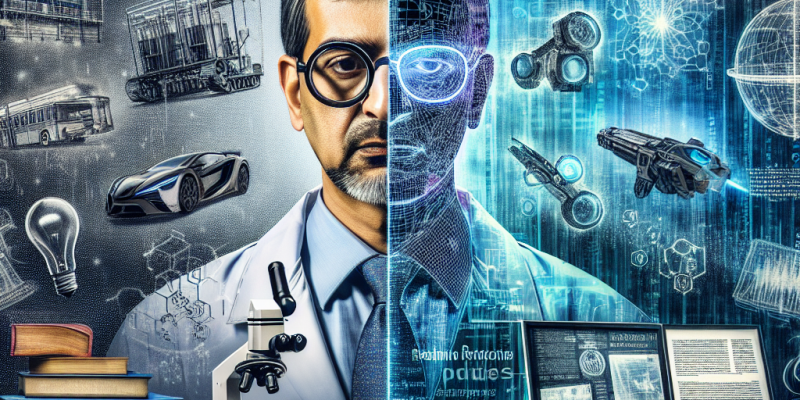From Research to Reality: Transformative Machine Learning Projects Making Headlines

Machine learning (ML), a subset of artificial intelligence (AI), is no longer confined to theoretical frameworks and academic journals. Over the last decade, it has evolved into a transformative technology making waves across industries, from healthcare to finance, entertainment to transportation. The rapid advancement of machine learning technologies showcases not only their capability to analyze vast amounts of data but also their potential to solve complex problems that were once thought insurmountable. In this article, we delve into several groundbreaking machine learning projects that have made headlines recently, spotlighting their revolutionary applications and implications for the future.
1. Healthcare Innovations: Early Disease Detection
One of the most promising applications of machine learning is in healthcare. From predicting patient outcomes to customizing treatment plans, ML is fundamentally transforming how we approach medicine. Notably, researchers at Stanford University developed an AI algorithm that can detect pneumonia in chest X-rays more accurately than human radiologists. The model, trained on a massive dataset of labeled images, can identify less obvious signs of the disease, enabling earlier diagnosis and potentially saving countless lives.
Similarly, Google Health’s deep learning system for diabetic retinopathy screening has gained attention for its ability to assess retinal images quickly and accurately. With diabetic retinopathy being a leading cause of blindness, implementing this technology in clinics worldwide could significantly reduce adverse outcomes for patients.
2. Transforming Finance: Fraud Detection Systems
In the finance sector, machine learning is redefining risk management and fraud detection strategies. Algorithms bring an edge in detecting anomalous patterns that signal fraudulent activity. FICO, for instance, has introduced predictive analytics that enables financial institutions to predict and prevent fraud in real-time. By analyzing transaction patterns and customer behavior, these systems can flag suspicious activities before they result in significant losses.
Moreover, ML is facilitating personalized financial services. Companies like ZestFinance use machine learning to integrate non-traditional data sources in credit scoring, making loans accessible to those who might be overlooked by conventional credit models. This shift not only democratizes access to credit but also lowers risk for lenders.
3. Environmental Impact: Climate Monitoring and Wildlife Conservation
As the world grapples with climate change, machine learning is proving invaluable in monitoring environmental changes and aiding conservation efforts. The "Wildlife Insights" project, developed in collaboration with Google and various conservation organizations, employs ML to analyze camera trap images to monitor wildlife populations and their behaviors efficiently. By automating the identification of species and counting animal populations, this initiative empowers wildlife conservationists with critical data, helping to protect endangered species and ecosystems.
Furthermore, researchers are harnessing ML to predict climate change impacts. The "Earth System Grid Federation" project uses machine learning algorithms to analyze vast climate datasets, facilitating better modeling of climate systems and enabling policymakers to make informed decisions about mitigating climate change.
4. Revolutionizing Transportation: Autonomous Vehicles
The race to develop fully autonomous vehicles is one of the most talked-about aspects of machine learning in transportation. Companies like Waymo and Tesla are pioneering self-driving technology using deep learning algorithms that integrate data from a plethora of sensors, including cameras, LIDAR, and ultrasonic sensors. These vehicles learn to navigate complex environments, recognize obstacles, and make driving decisions with minimal human intervention.
The potential societal benefits are enormous; through increased safety and reduced traffic congestion, autonomous vehicles could fundamentally alter our daily commutes and urban planning strategies. However, this technology also poses questions regarding ethics, regulatory frameworks, and public acceptance that need to be addressed as it matures.
5. Creative Arts: AI-Generated Media
Machine learning is also making its mark in the creative arts, challenging traditional notions of authorship and creativity. OpenAI’s GPT-3 and similar models have demonstrated the ability to generate human-like text, creating essays, poetry, and even code. In visual arts, platforms like DALL-E enable users to create stunning images and illustrations based on textual descriptions—bridging the gap between words and visuals in unprecedented ways.
While the creative potential of these technologies is breathtaking, they also raise important questions about copyright, ownership, and the role of human creativity in the arts. As the capabilities of AI expand, discussions about ethics and regulation are necessary to navigate this evolving landscape.
Conclusion
The transformative power of machine learning projects is reshaping industries, improving lives, and providing solutions to some of the world’s most pressing challenges. From healthcare innovations that save lives to environmental initiatives that protect our planet, the potential applications for ML are as diverse as they are impactful. As these technologies continue to develop, the collaboration between researchers, policymakers, and industries will be crucial in harnessing their full potential while addressing ethical concerns and societal implications. The journey from research to reality is not only exciting but essential for a future where technology and humanity can thrive together.














